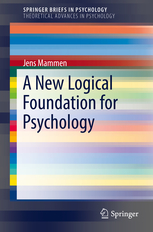What is a Choice Category within Jens Mammen’s framework? In my understanding, a Choice Category is tied to two other concepts. On one hand, it is tied to the concept of identity and, on the other hand, it is tied to self-reference. You could think of identity and self-reference as two sides of the same coin. And that coin is the category of Choice (Mammen, 2016).
“… two people are perceiving one and the same object through the manifolds of appearances that each enjoys from his own perspective. Then, one of the persons draws the attention of the other (as well as his own) to the object as a whole, in its identity. He names the object and establishes a reference, for another as well as for himself. By using a name, he sets up the object as the subject, as the thing that is going to be articulated.” (Sokolowski, 2008, p. 59)
Here is an example. A student approached me after the class to let me know that I had misspelled her name. I apologized. We both smiled and said goodbye to each other. Why is our name important to us? Could it be because it signifies that we are subjects? Could it be that it signifies that we can be “predicated” in an infinite number of ways? As Jens Mammen (2016) might say, a name signifies the fact that a person belongs to an infinite number of sense categories and that, by implication, we are more than the sum of those categories.
Jean Piaget described two kinds of same-ness (von Glasersfeld, 1995). This red ball is the same as that other red ball. He called the first kind equivalence. Two objects are equivalent, in so far as they belong to a set of common sense categories, e.g., redness, roundness, solidity. There is another kind of sameness that underlies identity. This melted chocolate is the same as the solid chocolate I put into my pocket an hour ago. Identity indicates persistence through time. It indicates a Choice Category (Mammen, 2016).
It seems, furthermore, that appreciating identity rests on a subject’s ability to track things through time. I kept track of the chocolate I put in my pocket, and I am still the same subject. The melted chocolate has preserved its reference to me (or my pocket) even though it has transformed in other ways.
References:
Mammen, J. (2016). Using a topological model in psychology: developing sense and choice categories. Integrative Psychological and Behavioral Science, 50(2), 196-233.
Sokolowski, R. (2008). Phenomenology of the human person. Cambridge University Press.
Von Glasersfeld, E. (1995). Radical constructivism. Routledge.


2 thoughts on “Mammen: Choice Category”